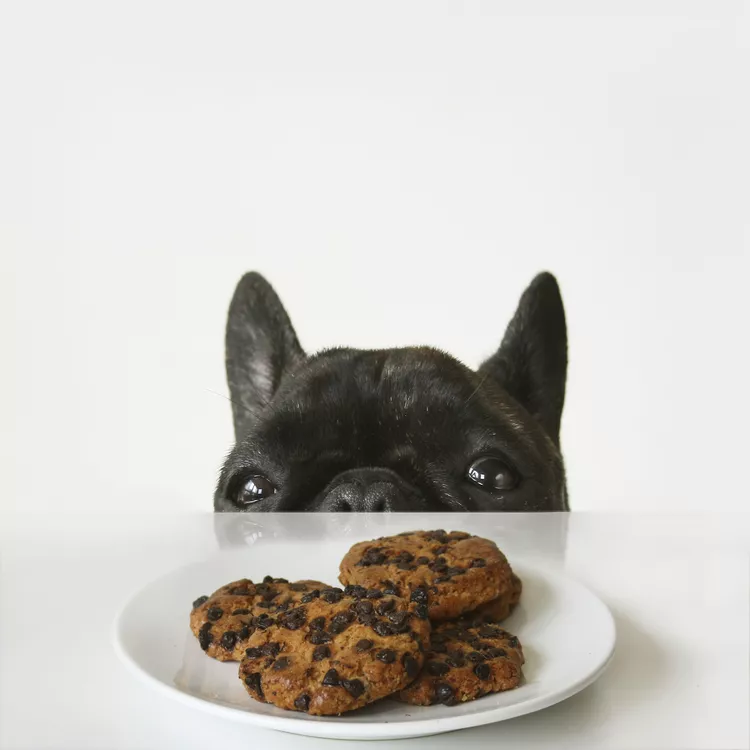Why is Chocolate Toxic to Dogs?

Chocolate is a popular food item found in many households, especially around holidays like Valentine's Day, Halloween, and Christmas. You may love chocolate, but for your pup, it can be harmful and potentially fatal. Chocolate is one of the top 10 toxins reported to the ASPCA. So, if you have it in your home, make sure to keep it out of your dog's reach.
Warning
If you suspect your dog has eaten chocolate, even a small amount, seek veterinary attention immediately!
Why Is Chocolate Toxic to Dogs?
Methylxanthines are the ingredients in chocolate that can pose a problem for dogs. Theobromine is the primary one found in chocolate. Caffeine, another methylxanthine, is also present in chocolate in smaller quantities. The exact amount of methylxanthines in chocolate differs because of the natural variation of cocoa beans and kinds of chocolate products.
The more pure cacao there is in a chocolate product, the more methylxanthines there are. Baking chocolate has the highest concentration of cacao and is, therefore, the most dangerous for dogs. This is followed by semisweet and dark chocolates, then milk chocolates, then chocolate-flavored cakes or cookies. White chocolate has an insignificant amount of theobromine, but ingestion can still cause gastrointestinal issues like vomiting, diarrhea, or pancreatitis.
Toxic doses of methylxanthines begin at 20 milligrams (mg) per kilogram of the dog’s weight for mild signs. Severe signs are likely to occur above 50 mg per kilogram. Milk chocolate contains 1.5-2.5 mg of methylxanthines per gram of milk chocolate. Semisweet chocolate and baker's chocolate may vary depending on the concentration of cacao in the product but will have much higher concentrations of methylxanthines than milk chocolate. Since chocolate toxicity is dose-dependent, a smaller dog will only need to eat a small amount to get sick, while a large dog needs to eat a larger amount to become ill. Your veterinarian can help you calculate the risk to your individual dog based on the type of chocolate ingested and your dog's weight.
Clinical signs of chocolate toxicity usually occur within twelve hours of eating the chocolate but can happen much sooner. Common signs of toxicity include gastrointestinal problems like vomiting, diarrhea, and/or a swollen belly. Dogs may also show signs of stimulation including agitation, hyperactive behavior, increased thirst and urination. In more serious cases, this may progress to stumbling around (ataxia), shaking, and/or seizures, coma, or even death.
On physical examination, your vet may notice changes associated with stimulatory effects including an increased heart rate, increased respiratory rate, high blood pressure, and elevated temperature. Other abnormal findings can be blue gums (cyanosis) and abnormal heart beats (cardiac arrhythmia).
Treatment for Chocolate Toxicity
If you suspect your dog has eaten any type of chocolate, it is recommended that they go to their veterinarian, or the nearest emergency hospital right away. Vomiting may be induced in a dog presenting before clinical signs have developed (usually within one hour of ingestion) and this can avoid potentially serious signs of toxicity.
For dogs who are already showing signs of toxicity, treatment is aimed at managing and controlling their signs while also attempting to prevent absorption of more toxins. This means that seizures are treated with medications to control them and abnormal heart rhythms may need to be treated with medications as well. Activated charcoal may be used to decontaminate the stomach and intestines and prevent further absorption of toxins.
Other treatments for symptomatic animals include fluid therapy, medications to control vomiting and/or muscle tremors, treatments to help maintain body temperature, correcting electrolyte abnormalities, and monitoring heart rhythm through electrocardiography (ECG). The signs of chocolate toxicity may last as long as 72 hours in severe cases.
How to Prevent Chocolate Toxicity
The best way to prevent this potentially fatal condition is to keep your dog away from chocolate. Keep it out of your dog's reach. Make sure that everyone in the household, especially children, understands how dangerous it can be for their dog to get chocolate in any form. If there is ingestion, even in small amounts, seek veterinary attention immediately. Early intervention is the key to a favorable prognosis.